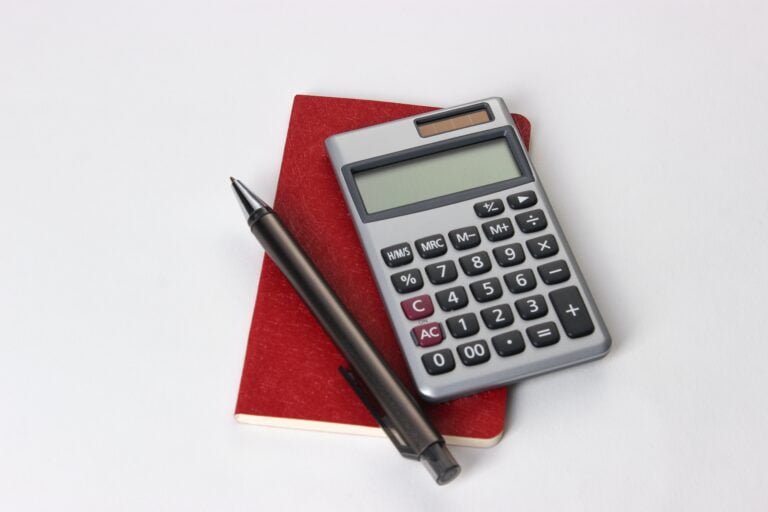South Korea Business Statistics: Behind The Numbers On The Economic Powerhouse
In this article, we delve into the dynamic world of South Korea’s business statistics, offering a panoramic view of the landscape where tech startups and SMEs flourish.
We will also explore the key trends in this vibrant market and unveil the critical role mentorship plays in navigating its complexities. Our analysis draws upon the latest data to map out the opportunities and challenges that lie ahead for businesses eager to make their mark in South Korea.
As North American and European entrepreneurs and executives set their sights on South Korea’s tech-savvy marketplace, understanding the nuances of the local business environment becomes paramount. The economic heartbeat of South Korea is synchronized with innovation and rapid growth, presenting a promising yet competitive arena.
If you’re an executive or entrepreneur interested in a smooth South Korean market entry, we can help. Connect with us today to explore how we can elevate your business endeavors in South Korea.
Economic Statistics

South Korea’s economy showcases a blend of resilience and adaptability amidst global economic fluctuations. As we navigate through 2023, the nation’s economic indicators provide a mixed canvas of growth, investment, and consumer behavior, offering insights crucial for businesses aiming to penetrate this market.
Industrial and Service Sectors
In recent months, South Korea has seen a varied performance across different sectors. Industrial and services production along with facility investment have shown upward trends. Specifically, in
August, all industry production grew by 2.2 percent month-on-month, with a year-on-year increase of 1.5 percent. This growth is significant for tech startups and SMEs as it points to a supportive environment for manufacturing and service-oriented ventures.
Consumer Trends and Employment
While the production sectors have flourished, retail sales have faced a downturn, with a decrease of 0.3 percent month-on-month and a sharper 4.8 percent year-on-year decline.
However, employment figures provide a positive outlook, with September adding 309 thousand jobs year-on-year, and a fall in the unemployment rate to 2.3 percent. This employment growth is indicative of a robust job market, essential for startups looking to hire local talent.
GDP Growth
The GDP growth rate of South Korea has moderated from 2.5% in 2022 to an estimated 1.7% in 2023. With quarter-on-quarter growth rates of 0.3% and 0.6% in the first and second quarters of 2023 respectively, the economy shows a trend of moderate positive growth. Such data is vital for businesses to time their market entry and investment strategies.
Inflation and Prices
Inflation has also been a critical factor, with consumer prices rising to 3.7 percent year-on-year as of September from 3.4 percent in August. This rate is expected to stabilize around 4.00 percent throughout 2023. For businesses, understanding inflation trends is key to pricing strategies and financial planning.
Economic Challenges and Government Action
Despite these positive indicators, South Korea faces economic headwinds, including concerns over prolonged monetary tightening, which have impacted stock prices and weakened the won.
The government has acknowledged these challenges and is actively working to manage risks and support households’ livelihoods, aiming to boost domestic consumption, investment, and exports. This proactive stance offers a degree of assurance to businesses operating in South Korea.
Consumer Statistics
South Korea’s consumer market is navigating through a period of adjustment as it emerges from the pandemic’s shadow.
In 2022, real household spending is expected to grow by 2.8%, reaching KRW792.9 trillion, with a further increase to KRW813.1 trillion in 2023—a rate slightly lower than the previous year’s growth, indicative of a return to pre-pandemic stability.
However, this modest optimism is tempered by a decline in consumer confidence, with the index plummeting to 86.0 in July 2022 from over 100 the previous year, reflecting fears of recession, rising inflation, and debt.
High Inflation Rates
These concerns are not unfounded. South Korea faced high inflation rates, which jumped to 6.3% year-over-year as of July 2022, driven by global events and supply chain disruptions. This inflation erodes purchasing power, particularly impacting discretionary spending.
Additionally, the nation grapples with one of the highest household debt-to-income ratios globally, standing at 169%. With rising interest rates, the burden of debt servicing is expected to suppress consumer spending further.
Yet, there’s a silver lining as the forecast for 2022 suggests economic growth by a real rate of 2.6%, supported by a decrease in unemployment to 3% and a projected increase in tourist arrivals by 64% in 2023.
These indicators provide a nuanced view of South Korea’s consumer market, vital for businesses and investors aiming to understand the complex interplay of factors shaping consumer behavior in this innovative economy.
Demographic Statistics
Unpacking South Korea’s demographic statistics reveals a nation poised at the intersection of rapid urbanization, declining fertility, and an impending demographic shift, factors that are essential to understand for any business looking to engage with this dynamic market.
Population Dynamics
South Korea’s demographic profile is one of contrasts and rapid changes. With a current population of approximately 51.77 million, the nation is expected to reach its peak population of 51.35 million by 2024.
The country’s growth rate has moderated, reflecting a broader global trend towards stabilizing populations. As of 2023, the United Nations data projects the population to be 51,784,059, with the population clock ticking in real-time.
Fertility and Aging
A significant demographic feature of South Korea is its world-lowest fertility rate of 0.92, indicating an average of less than one child per woman. This trend is attributed to factors such as high education costs, expensive housing, and challenges faced by women in returning to work post-childbirth.
Consequently, the aging population is on the rise, with predictions stating almost half of the populace will be over 65 by 2065, a shift that could impact the workforce, economy, and even military capabilities.
Urban Density and Movement
Geographically, South Korea is a nation of stark density contrasts. Nearly 70% of its land is mountainous and largely uninhabitable, resulting in a high population density in the lowland areas, with an average density of 503 people per square kilometer. This density is more than ten times the global average.
Seoul, the capital, is almost twice as dense as New York City, exemplifying the concentration of urban populations. The growth of these urban areas has historically been fueled by migration for job opportunities, education, and convenience, as seen in the substantial growth of cities like Ulsan.
Finance Statistics
South Korea’s economic indicators reflect a resilient yet evolving market. In recent months, there has been a marked growth in industrial and services production, alongside facility and construction investment, pointing to a robust economic activity.
However, this growth is juxtaposed with declining retail sales and a weakening currency, underscoring the delicate balance the economy maintains in the face of global financial pressures.
Notably, in sectors like semiconductors, there has been an uptick in exports, particularly to China, indicating a recovery momentum in key industries. As consumer prices rise, the economy still manages to generate jobs, with unemployment rates dipping to 2.3 percent.
This paints a picture of an economy that, while facing challenges such as inflation and stock market fluctuations, demonstrates agility and a capacity for growth.
Manufacturing Statistics
In the manufacturing realm, South Korea continues to assert its dominance, with significant contributions from ICT, electronics, heavy industries, automotive, materials, and construction sectors.
Despite facing increased competition from other Asian countries and shifts in global demand, the nation’s manufacturing base remains strong, with giants like Samsung and LG leading in ICT and electronics, and companies like Hyundai Heavy Industries spearheading heavy machinery and shipbuilding.
The shift towards carbon-neutral drives and the adoption of AI and 5G technologies showcase the country’s commitment to innovation and adaptation in manufacturing.
However, there are challenges such as rising labor costs and declining capital investment, which the country is addressing by seeking ways to enhance productivity and reduce costs in manufacturing.
Investment Statistics
The investment climate in South Korea is characterized by a mix of opportunities and challenges.
Supply-chain issues and high-interest rates have led to challenges in construction credit lending, while the residential market faces oversupply issues. In contrast, office assets are attracting demand, signaling an area of growth within the real estate sector.
These factors indicate a cautious yet opportunistic investment landscape where strategic decisions are influenced by both domestic and international economic trends.
Conclusion
South Korea’s economy exemplifies resilience and innovation, with robust manufacturing sectors and a finance market that deftly navigates global trends.
Despite facing global economic headwinds, the country’s agile response and strategic investments signal a fertile ground for businesses aiming to engage with a forward-looking and technologically advanced market.
As a hub of growth and opportunity, South Korea is poised to maintain its role as a key player in the global economy.







